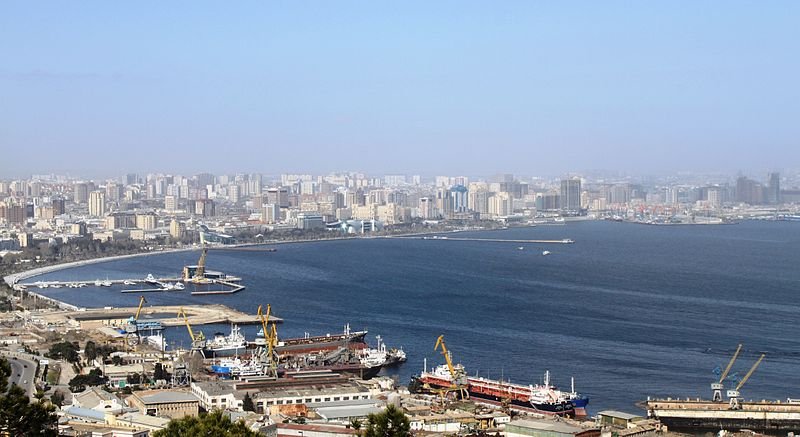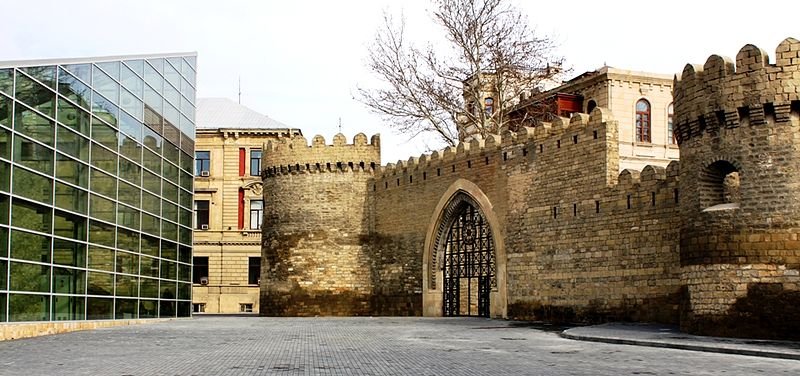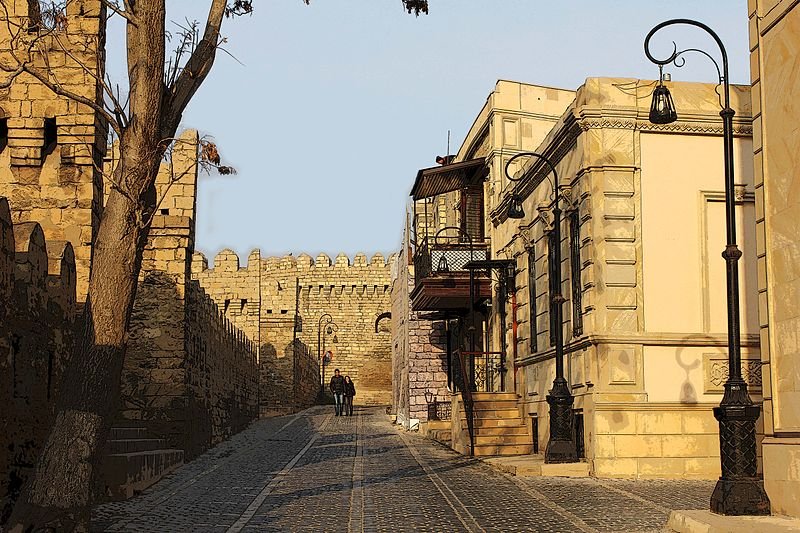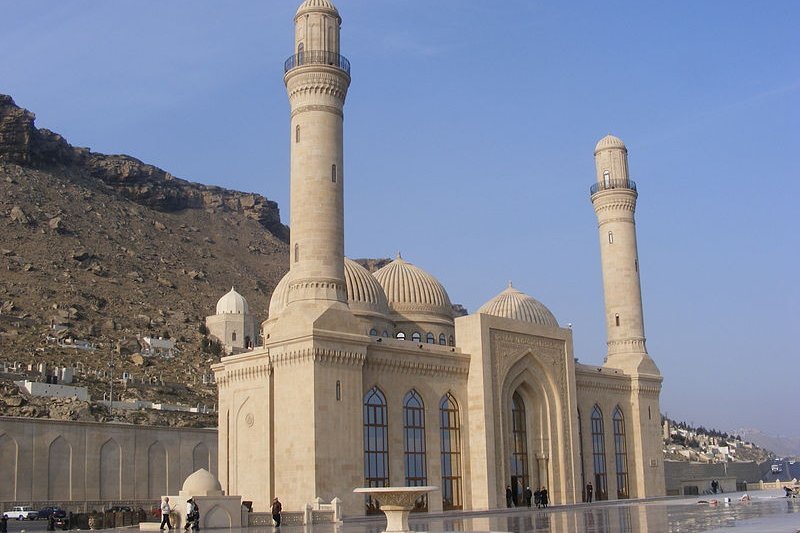 Panoramic view of Baku, Azerbaijan
Panoramic view of Baku, AzerbaijanSource: https://commons.wikimedia.org/wiki/File:Panoramic_Baku.jpg
Author: Gulustan

Author: Gulustan

Baku is the capital and largest city in Azerbaijan. Located on the southern shore of the Absheron Peninsula facing the Caspian Sea, it spreads over 2,130 sq km (820 sq mi) and has a population of around 2 million people (2012 estimate).
 Fortress of Baku, Azerbaijan
Fortress of Baku, AzerbaijanSource: https://en.wikipedia.org/wiki/File:Baku08.jpg
Author: Gulustan

Author: Gulustan

Baku is today home to a quarter of the population of Azerbaijan, although inofficial figures, through rural migration, places the figure as high as 40%. The city is the cultural, financial and industrial center for the country. It is also the headquarters of SOCAR, the State Oil Company of Azerbaijan Republic, which is today ranked as the 68th largest company in the world, with revenue of US$20 billion.
Baku comprises eleven districts, which includes the islands in the Baku Bay and the town of Oil Rocks, which was built on stilts in the Caspian Sea, some 60 km (37 mi) from Baku proper. Mainland Baku itself is divided into two main parts: the old Inner City and downtown Baku. Within the Inner City are the Shirvanshah's Palace and Maiden Tower, both recognized by UNESCO as World Heritage Sites.
 Beautifully quaint part of the old city of Baku
Beautifully quaint part of the old city of BakuSource: https://commons.wikimedia.org/wiki/File:%C4%B0%C3%A7%C9%99ri%C5%9F%C9%99h%C9%99r_1.jpg
Author: Samir Resulov

Author: Samir Resulov

The name Baku means "wind-pounded city" in old Persian. The city was first documented in the 1st century AD. The destruction brought on by earthquake to the city of Shamakhy in the 12th century benefited Baku, as the ruler Akhsitan I, decided to make Baku the new capital. In the 16th century the city was attacked and captured a number of times by troops of Safavid Dynasty. In 1723 it fell to the Russians, and remained under Russian rule until 1795, when Agha Muhammad Khan invaded it to check further Russian progress.
In 1813, Russia once again annexed Baku and most of the Caucasus. Discovery of oil in the 19th century brought renewed interest in Baku, and large-scale oil exploration began in 1872. The October Revolution and breakup of the Russian Empire brought a period of turbulence to Baku, with the Bolsheviks condoning civil warfare. In 1920, Baku was made the capital of the Azerbaijan Soviet Socialist Republic.
 Nizami Street in Baku, with view of the opera theatre
Nizami Street in Baku, with view of the opera theatreSource: https://commons.wikimedia.org/wiki/File:Nizami_street-Baku-02.jpg
Author: Shikhlinski

Author: Shikhlinski

After the collapse of the Soviet Union in 1991, Baku became the capital of the independent Republic of Azerbaijan. The majority of its population are Shia Muslims (the country itself has the second highest population percentage of Shia Muslims in the world after Iran.
Visiting Baku
The Heydar Aliyev International Airport (GYD), located 25 km (15 mi) from downtown Baku receives flights from major cities in Europe and Central Asia. The cheapest connections are from Moscow on Aeroflot. There are also inexpensive flights from Riga. Arriving at the airport, take Bus No. 16 to Samed Vurgun Park in downtown Baku. The journey takes about an hour. Bibi-Heybat Mosque, the most famous mosque in Baku
Bibi-Heybat Mosque, the most famous mosque in BakuSource: https://commons.wikimedia.org/wiki/File:Bibiheyb%C9%99t_m%C9%99scidi.jpg
Author: Ferid Zeynalov

Author: Ferid Zeynalov

Places of Interest in Baku
- Azerbaijan State Academic Opera and Ballet Theatre
- Azerbaijan State Museum of History
- Azerbaijan State Philharmonic Hall
- Baku Museum of Modern Art
- Bibi-Heybat Mosque
- Flame Towers
- Juma Mosque
- Muhammad Mosque
- SOCAR Tower
- Taza Pir Mosque
 Latest updates on Penang Travel Tips
Latest updates on Penang Travel Tips
 Map of Roads in Penang
Map of Roads in Penang
Looking for information on Penang? Use this Map of Roads in Penang to zoom in on information about Penang, brought to you road by road.
Copyright © 2003-2025 Timothy Tye. All Rights Reserved.

 Go Back
Go Back